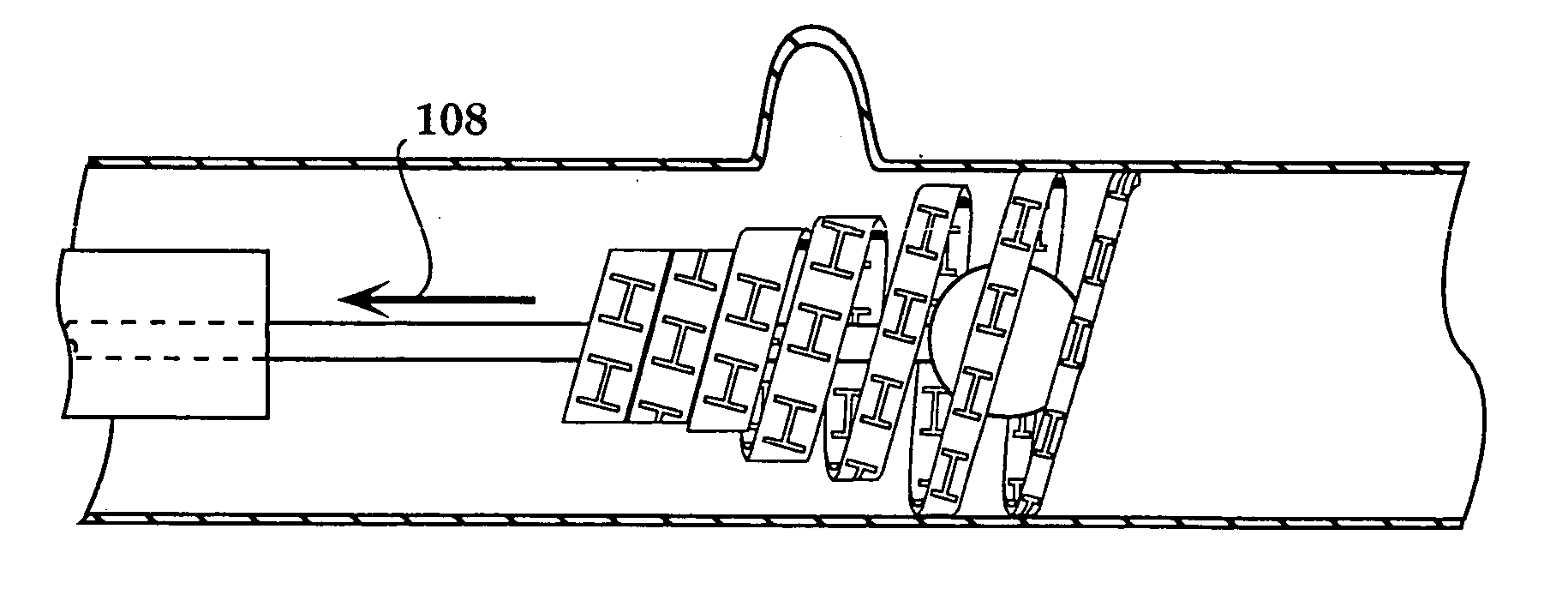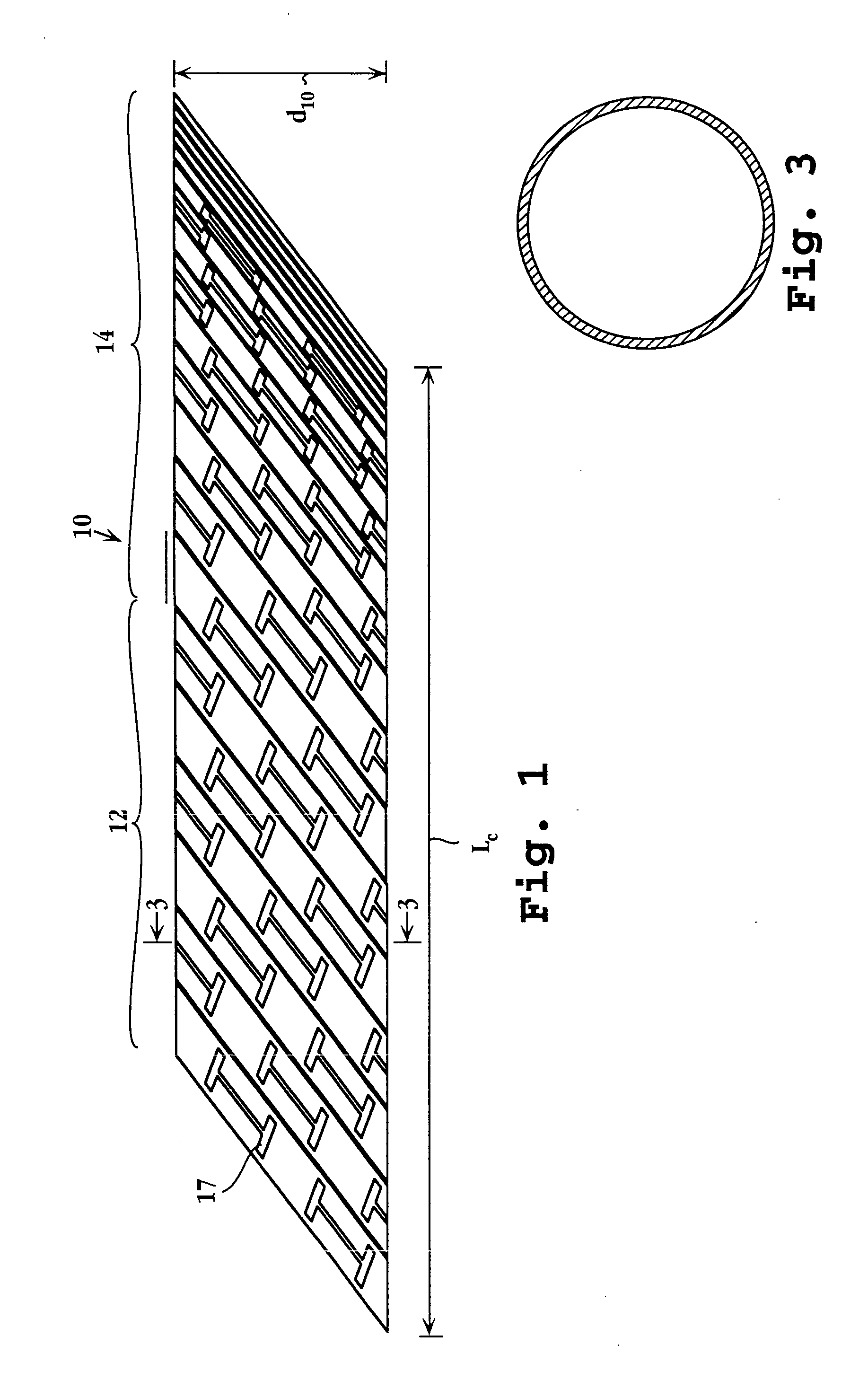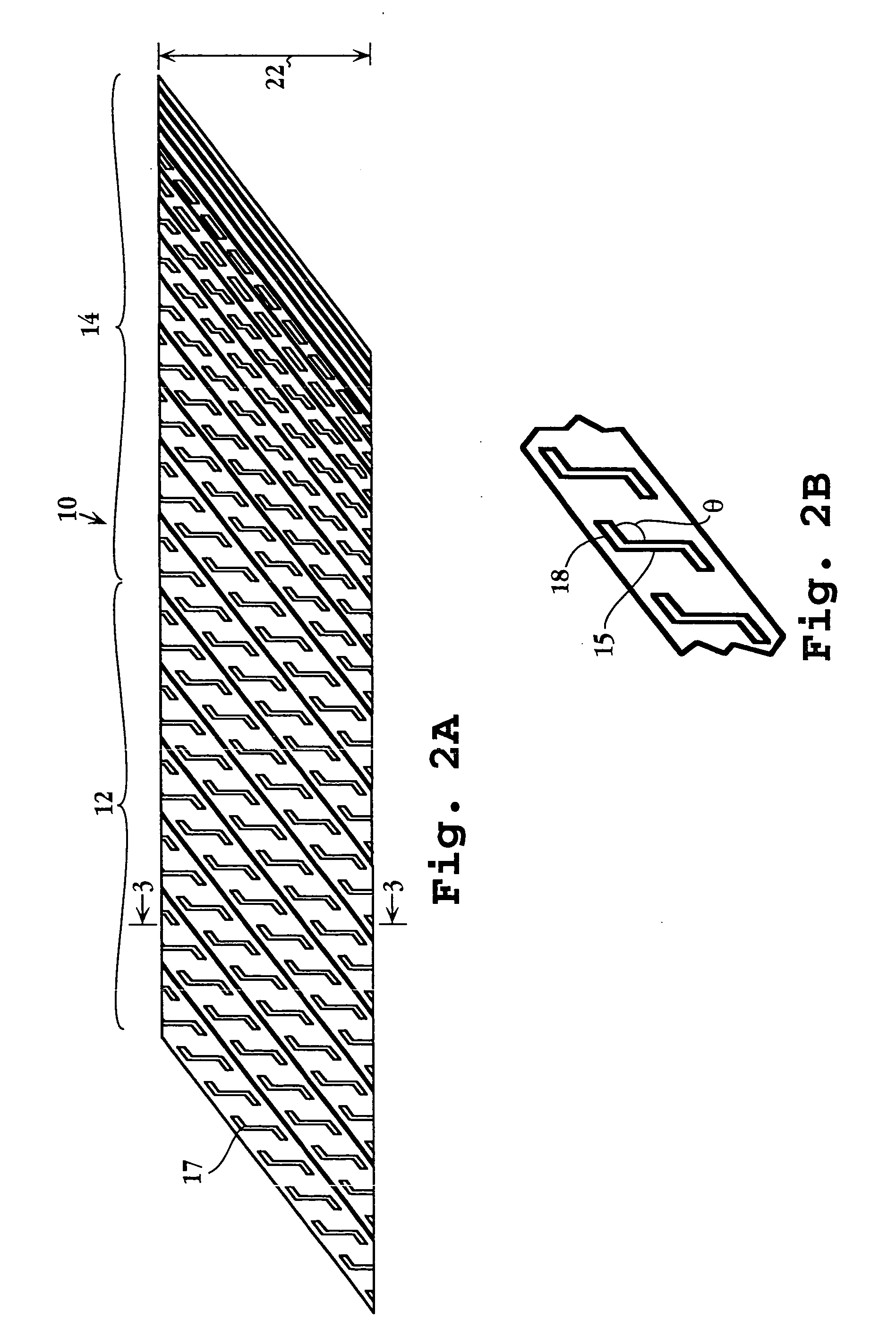Method for treating neurovascular aneurysms
a neurovascular aneurysm and neurovascular technology, applied in the field of vascular endoprosthesis, can solve the problems of vessel injury, inability to advance to a target site, and survivors becoming seriously disabled, and achieve the effect of greater ribbon width, lesser ribbon width, and greater ribbon width
- Summary
- Abstract
- Description
- Claims
- Application Information
AI Technical Summary
Benefits of technology
Problems solved by technology
Method used
Image
Examples
Embodiment Construction
[0036] The present invention includes, in one aspect, a stent adapted for advancement through a catheter in a upstream to downstream direction to a target vessel site, in a contracted stent condition, and expulsion from the catheter, downstream end first, and radial expansion at the target site, to engage the walls of the vessel. The stent is formed of a continuous helical ribbon formed of a preferably shape-memory alloy, and has a bending-stiffness gradient along its length due to (i) a gradient of ribbon width, (ii) a gradient of ribbon thickness, and / or (iii) a gradient of size or number of openings formed in the stent ribbon. The stent is preferably graftless, i.e., it consists of a metal coil alone without a woven or film-like graft formed over the coil or between the coil windings, and is preferably formed of a shape-memory alloy, as discussed below.
[0037] By bending-stiffness gradient is meant a difference in bending stiffness, as measured by amount or degree of stent bendin...
PUM
| Property | Measurement | Unit |
|---|---|---|
| diameter | aaaaa | aaaaa |
| diameter | aaaaa | aaaaa |
| diameter | aaaaa | aaaaa |
Abstract
Description
Claims
Application Information
 Login to View More
Login to View More - R&D
- Intellectual Property
- Life Sciences
- Materials
- Tech Scout
- Unparalleled Data Quality
- Higher Quality Content
- 60% Fewer Hallucinations
Browse by: Latest US Patents, China's latest patents, Technical Efficacy Thesaurus, Application Domain, Technology Topic, Popular Technical Reports.
© 2025 PatSnap. All rights reserved.Legal|Privacy policy|Modern Slavery Act Transparency Statement|Sitemap|About US| Contact US: help@patsnap.com



